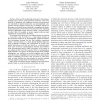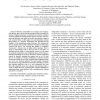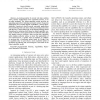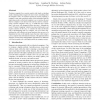SP
2010
IEEE
14 years 3 months ago
2010
IEEE
Abstract—Most security mechanisms proposed to date unquestioningly place trust in microprocessor hardware. This trust, however, is misplaced and dangerous because microprocessors...
SP
2010
IEEE
14 years 3 months ago
2010
IEEE
Abstract—Modern automobiles are no longer mere mechanical devices; they are pervasively monitored and controlled by dozens of digital computers coordinated via internal vehicular...
SP
2010
IEEE
14 years 3 months ago
2010
IEEE
—A growing number of current web sites combine active content (applications) from untrusted sources, as in so-called mashups. The object-capability model provides an appealing ap...
SP
2010
IEEE
14 years 3 months ago
2010
IEEE
Trusting a computer for a security-sensitive task (such as checking email or banking online) requires the user to know something about the computer’s state. We examine research ...
SP
2010
IEEE
14 years 3 months ago
2010
IEEE
—Captchas are designed to be easy for humans but hard for machines. However, most recent research has focused only on making them hard for machines. In this paper, we present wha...
SP
2010
IEEE
14 years 3 months ago
2010
IEEE
— Virtualization is being widely adopted in today’s computing systems. Its unique security advantages in isolating and introspecting commodity OSes as virtual machines (VMs) ha...
SP
2010
IEEE
14 years 3 months ago
2010
IEEE
Abstract—Belief and vulnerability have been proposed recently to quantify information flow in security systems. Both concepts stand as alternatives to the traditional approaches...
SP
2010
IEEE
14 years 3 months ago
2010
IEEE
—Social networking sites such as Facebook, LinkedIn, and Xing have been reporting exponential growth rates. These sites have millions of registered users, and they are interestin...
SP
2010
IEEE
14 years 3 months ago
2010
IEEE
– With software-as-a-service becoming mainstream, more and more applications are delivered to the client through the Web. Unlike a desktop application, a web application is split...
SP
2010
IEEE
14 years 3 months ago
2010
IEEE
—To handle the growing flood of malware, security vendors and analysts rely on tools that automatically identify and analyze malicious code. Current systems for automated malwar...




